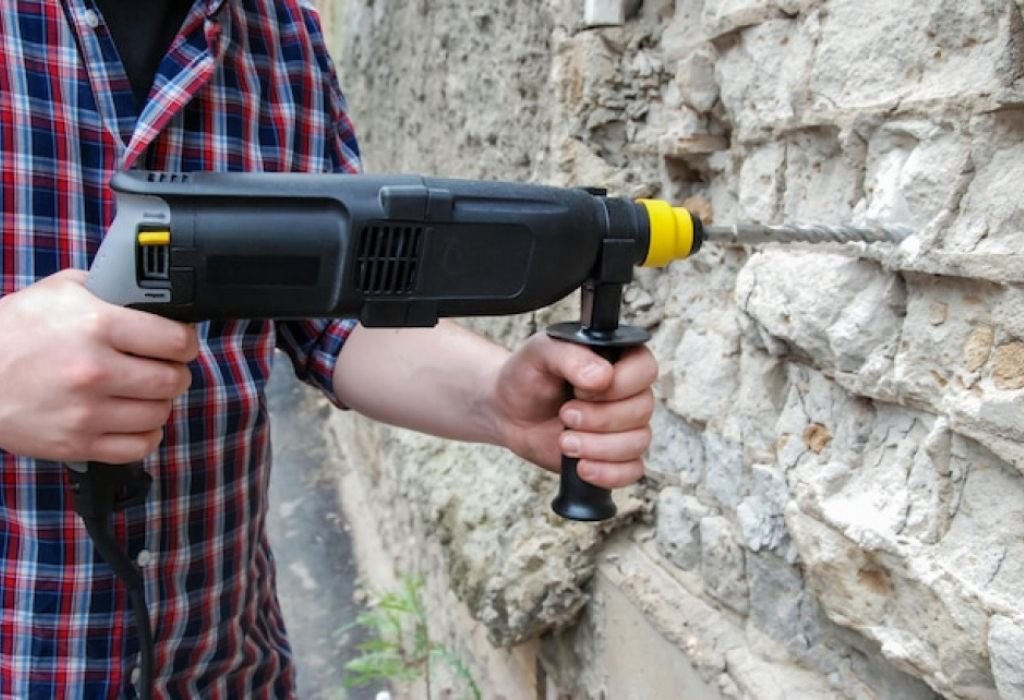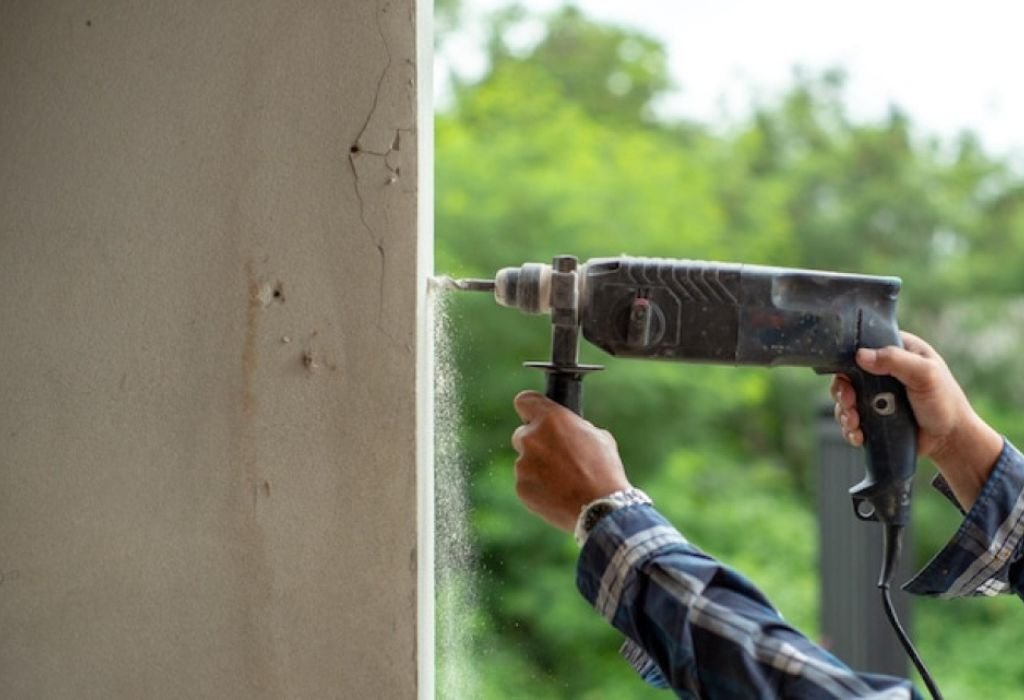Power tools can feel intimidating at first, and rotary hammers are no exception. Their power, size, and vibration can make them look difficult for beginners.
Yet, once understood, a rotary hammer becomes one of the most versatile and effective tools available.
It can drill, chisel, and break materials with precision.
Imagine drilling into solid concrete with a regular drill. The process is slow, bits wear down, and frustration builds quickly. A rotary hammer solves that struggle with ease.
These tools are designed to combine hammering force with rotation, which lets them break through masonry like concrete, stone, and brick.
This feature makes them essential in both professional and DIY projects.
Safety is the key factor in mastering their use. According to the U.S. Bureau of Labor Statistics, over 130,000 tool-related injuries happen annually, many of which are preventable (BLS Report).
Learning the correct techniques, choosing the right accessories, and following safety protocols ensures effective and injury-free use.
This guide will explain how to use a rotary hammer, covering setup, operation, applications, and maintenance. It will also answer common questions and give expert insights.
What Is a Rotary Hammer?

A rotary hammer is a heavy-duty power tool designed for drilling and chiseling hard materials. It uses a piston mechanism to deliver strong hammering blows while the bit rotates.
This makes it far more efficient than standard hammer drills when working on masonry, stone, or reinforced concrete.
What materials can a rotary hammer drill into?
It can handle concrete, brick, stone, and other dense masonry surfaces.
How is a rotary hammer different from a hammer drill?
A hammer drill uses a clutch-based mechanism, while a rotary hammer uses a piston, delivering much stronger impact force.
Can it be used for chiseling?
Yes, most rotary hammers have a chisel-only mode for removing tiles, breaking concrete, or similar jobs.
Do rotary hammers come in different sizes?
Yes, they range from compact SDS-Plus models to heavy-duty SDS-Max tools for industrial work.
Preparing to Use a Rotary Hammer
Preparation ensures both safety and efficiency when operating a rotary hammer.
Start by choosing the correct bit size and type for your task. Masonry bits, chisel bits, and core bits are common options.
Always inspect the tool and cord before use to confirm there are no damages or loose parts. Wear protective equipment including goggles, gloves, and ear protection.
Mark the drilling point on your material to ensure accuracy. Position the bit securely before powering on the tool.
What safety gear should be worn?
Eye protection, gloves, and hearing protection are essential. A dust mask is recommended for concrete work.
How do I choose the right bit?
Select a masonry bit for drilling, a chisel bit for tile removal, or a core bit for large openings.
Should I lubricate the drill bit?
Yes, some applications require light lubrication to reduce heat and wear.
Do I need to check the power source?
Always confirm voltage compatibility and inspect the cord before use.
How to Use a Rotary Hammer for Drilling
Using a rotary hammer correctly begins with setting the right mode. Switch to “hammer drill” mode for drilling into masonry.
Hold the tool firmly with both hands, keeping a balanced stance. Start at a low speed, gradually increasing pressure as the bit penetrates.
Avoid forcing the bit, as the hammering action does most of the work. Pause periodically to let the bit cool and clear debris.
What speed should I use?
Start slow to guide the bit, then increase speed steadily for deeper drilling.
How do I prevent the bit from overheating?
Pause occasionally and allow airflow or use water cooling for longer drilling.
What stance should I use?
Keep feet shoulder-width apart with a firm two-handed grip on the tool.
Can I drill into rebar with a rotary hammer?
Yes, but use a rebar-cutting bit designed for reinforced concrete.
How to Use a Rotary Hammer for Chiseling
Rotary hammers often feature a “chisel-only” mode, making them excellent for demolition work.
Attach a flat, pointed, or scaling chisel depending on the material. Position the chisel firmly and let the hammering force break the material.
Avoid pushing down too hard, as the hammer action delivers sufficient power. Work in sections for cleaner and faster results.
What chisels can be used?
Point chisels for breaking, flat chisels for removal, and scaling chisels for surface cleaning.
Do I need to push hard while chiseling?
No, the tool provides enough force—just guide it.
Can I use a rotary hammer to remove tiles?
Yes, use a flat chisel to lift and break tiles effectively.
What surfaces are ideal for chiseling?
Concrete, tile, stone, and masonry walls.
Common Mistakes to Avoid

Misuse can lead to tool damage or injuries. Forcing the tool is one of the most common mistakes.
Ignoring bit compatibility may reduce efficiency or even break the bit. Operating without protective gear is another serious error.
Failing to maintain the tool, such as not cleaning or lubricating, shortens its lifespan. Always follow manufacturer guidelines.
Why should I not force the tool?
The piston delivers the power—forcing it risks bit breakage and injury.
Can I use wood or metal bits?
No, only use masonry-rated bits designed for rotary hammers.
What happens if I skip protective gear?
It increases risks of eye injury, hearing loss, or hand strain.
Do I need to cool the tool?
Yes, pause during heavy use to prevent overheating.
Maintenance Tips for Long Life
Proper care extends the life of your rotary hammer. Clean the tool after each use, removing dust and debris.
Lubricate the chuck and bits regularly to reduce wear. Store the tool in a dry, safe place away from moisture.
Replace worn bits promptly to maintain efficiency. Have the tool inspected if unusual vibrations or sounds appear.
How often should I clean my tool?
After every use, wipe and blow out dust from vents and crevices.
Should I lubricate the tool itself?
Yes, follow the manufacturer’s instructions for greasing internal parts.
What storage conditions are best?
Store in a dry, cool location inside a case if possible.
When should I replace bits?
Replace when they appear dull, chipped, or ineffective.
Conclusion
A rotary hammer is a powerful tool that simplifies tough jobs like drilling concrete and chiseling masonry. Mastering its use ensures efficiency and safety.
Preparation, proper technique, and consistent maintenance are the keys to long-term success. Following best practices prevents injuries and keeps the tool reliable.
By learning how to use a rotary hammer safely and effectively, both professionals and DIYers can take on demanding projects with confidence.

I’m John F. Nicholas, the founder, lead writer, and drill enthusiast behind 101drill.com. With years of hands-on experience in power tools and DIY projects, I created this platform to share practical knowledge, expert tips, and real-world insights to help others master the art of drilling.
